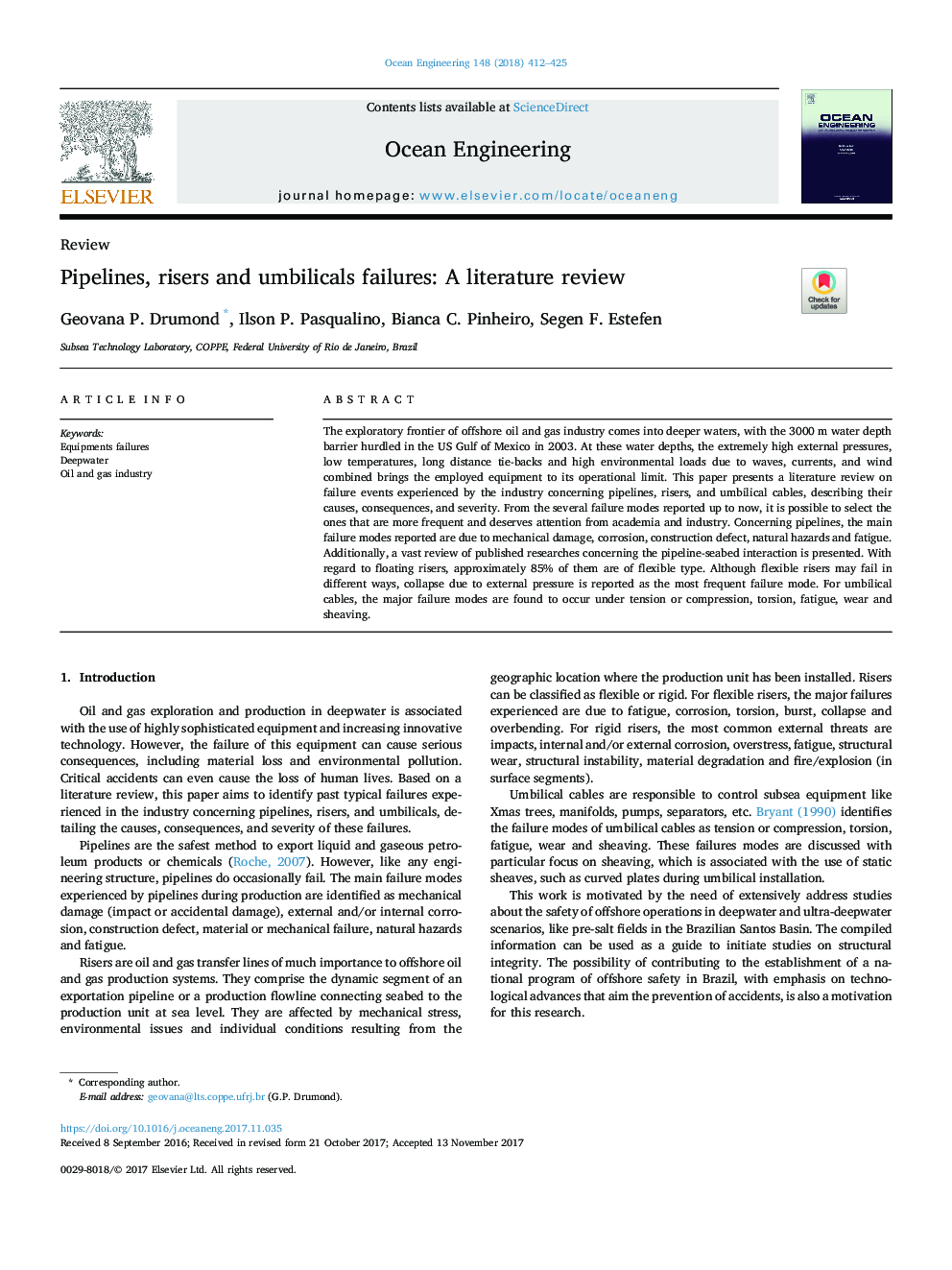| Article ID | Journal | Published Year | Pages | File Type |
|---|---|---|---|---|
| 8063478 | Ocean Engineering | 2018 | 14 Pages |
Abstract
The exploratory frontier of offshore oil and gas industry comes into deeper waters, with the 3000Â m water depth barrier hurdled in the US Gulf of Mexico in 2003. At these water depths, the extremely high external pressures, low temperatures, long distance tie-backs and high environmental loads due to waves, currents, and wind combined brings the employed equipment to its operational limit. This paper presents a literature review on failure events experienced by the industry concerning pipelines, risers, and umbilical cables, describing their causes, consequences, and severity. From the several failure modes reported up to now, it is possible to select the ones that are more frequent and deserves attention from academia and industry. Concerning pipelines, the main failure modes reported are due to mechanical damage, corrosion, construction defect, natural hazards and fatigue. Additionally, a vast review of published researches concerning the pipeline-seabed interaction is presented. With regard to floating risers, approximately 85% of them are of flexible type. Although flexible risers may fail in different ways, collapse due to external pressure is reported as the most frequent failure mode. For umbilical cables, the major failure modes are found to occur under tension or compression, torsion, fatigue, wear and sheaving.
Keywords
Related Topics
Physical Sciences and Engineering
Engineering
Ocean Engineering
Authors
Geovana P. Drumond, Ilson P. Pasqualino, Bianca C. Pinheiro, Segen F. Estefen,
